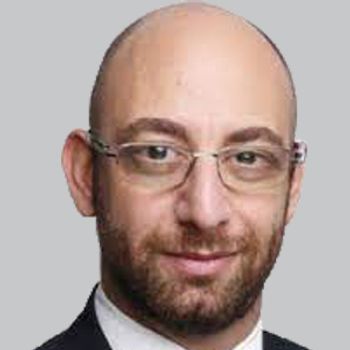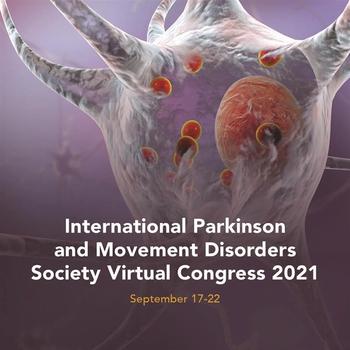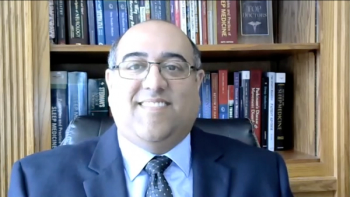
The professor of neurology at Weill Cornell Medical School commented on the available treatments for Parkinson disease, as well as ongoing therapeutic development.

The professor of neurology at Weill Cornell Medical School commented on the available treatments for Parkinson disease, as well as ongoing therapeutic development.

Patients previously randomized to omaveloxolone in the core study period continued to show no worsening on modified Friedrich Ataxia Rating Scale relative to their original baseline after nearly 2.5 years of treatment.

Patients who underwent deep brain stimulation procedures that were managed postoperatively in the home reported significantly fewer clinic visits with similar MDS-UPDRS scores to standard of care.

Investigators noted the psychiatric adverse effects of treatment with medical cannabis, requiring patient monitoring after initiation.

Despite not meeting the primary end point, those in the early-start group showed reduced change from baseline in MDS-UPDRS-III scores compared with the delayed-start group at both weeks 52 and 104.

Neurology News Network for the week ending September 18, 2021.

Data from the PRIME-NL study showed stressors resulting from the pandemic impacted depression, anxiety, and quality of life.

Take 5 minutes to catch up on NeurologyLive's highlights from the week ending September 17, 2021.

The president of the American Academy of Sleep Medicine emphasized the need to prioritize sleep for children and the organization’s efforts to improve sleep health.

Improvements in mean total amount of time and percentage of participants that were awake suggested limited effect with opicapone (Ogentys; Neurocrine Bio).

The director of the Movements Disorders Clinic at Houston Methodist Neurological Institute discussed data presented at the International Parkinson and Movement Disorders Society Virtual Congress 2021.

Patients with Parkinson disease in both the 24-hour and 16-hour ND0612 dosing regimen groups had ON-state UPDRS-motor scores and UPDRS-ADL scores improve over the 12-month period.

Deena Kuruvilla, MD, director, Westport Headache Institute, offered her insight into the trends in the clinical care of migraine and the effect that the pandemic has had on patients.

Participants in the pilot study saw improvements in short-term memory, attention, and executive functioning.

The director of the division of vascular neurology at the University of Utah discussed ongoing efforts from the AAN, as well as the potential to integrate advanced practice providers into neurology teams.

Data from MDS 2021 suggest that a 6-week brisk walking program can improve MDS-UPDRS nonmotor scores significantly compared to standard stretching interventions.

The director of IT and Neuroinformatics Development at the Buffalo Neuroimaging Analysis Center provided a realistic perspective of when and how AI will be incorporated into the wider medical system.

Torticollis was the most common predominant cervical dystonia presentation subtype at injection 1, followed by laterocollis.

Initiated by Biogen, the study will evaluate the effectiveness of the treatment in patients previously treated with risdiplam (Evrysdi; PTC Therapeutics).

Investigators found that preschool children had fewer sleep disturbances than older children during home confinement.

The associate professor of neurology at Washington University in St. Louis discussed the latest initiative from the AASM, emphasizing sleep health for school-aged children.

When comparing only the lowest and highest HbA1c groups with each other, unadjusted and adjusted regression analysis indicated faster motor progression in the highest group.

With the field of multiple sclerosis care focusing on the importance of patient-reported outcomes and shared decision-making, the physical therapist at UC Health and cochair of the International Organization of MS Rehabilitation Therapists offered commentary.

The combination drug of sodium phenylbutyrate–taurursodiol has been shown to functional decline in patients with amyotrophic lateral sclerosis compared with placebo in the phase 2/3 CENTAUR trial.

The director of IT and Neuroinformatics Development at the Buffalo Neuroimaging provided thoughts on artificial intelligence’s role in neuroimaging and treating multiple sclerosis.

Longboard Pharmaceuticals plans to initiate a phase 1b/2a trial to determine the efficacy of the 5-HT2c receptor superagonist in patients with developmental and epileptic encephalopathies.

Joshua Katz, MD, commented on the possibility of an extra vaccine dose for patients with MS and experts’ hope to improve antibody response among the immunocompromised.

The division chief of vascular neurology at the University of Utah discussed the misperceptions surrounding the field of neurology, as well as the importance of increasing fellowship training.

After receiving expanded indication from the FDA as both an acute and preventive treatment of cluster headache, gammaCore becomes the first treatment for paroxysmal hemicrania and hemicrania continua.

The SELECT-HD trial (NCT05032196) is expected to enroll approximately 36 patients with a confirmed diagnosis of early-stage Huntington disease and carry the SNP3 allele in association with their CAG expression.